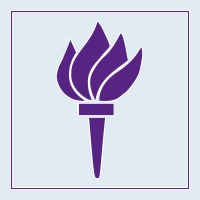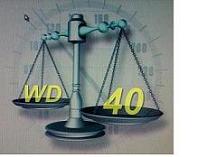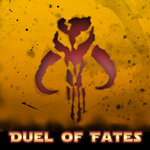Decision 2012
19 posts
• Page 1 of 2 • 1, 2
Decision 2012
Who you guys want for President between Obama or Romney. Explain why and see how many people say obama or romney 2012!!! Go romney
-

(Swgo)Ted - Community Member
- Posts: 222
- Joined: Fri Feb 04, 2011 10:39 pm
Re: Decision 2012
Gary Johnson 2012.
Already submitted my absentee ballot. Yea.
Already submitted my absentee ballot. Yea.
...انا أتكلم اللغة العربية. هل هي سيئة؟ لا
-

(=DK=)Samonuh - Community Member
- Posts: 734
- Joined: Sun Aug 14, 2011 5:20 am
Re: Decision 2012
By now, I think you are all aware that I support Mitt Romney. I do so for the following reasons:
1) Has an agenda
2) Wants to help our allies
3) Obama is just interested in basking in the glory of the presidency, not in helping the middle class, he has done almost nothing in 2 years to help the middle class. Whereas Romney at least has a plan, a 5-point plan. :
:

This is why I support Romney. With Obama you know what you get--MEDIOCRITY if you are extremely lucky-- we need someone who at least is interested in talking about what needs to done, not what he has done, which isn't much.
BTW: (SWGO)Ted this thread is
Sincerely,
kjeopardy
1) Has an agenda
2) Wants to help our allies
3) Obama is just interested in basking in the glory of the presidency, not in helping the middle class, he has done almost nothing in 2 years to help the middle class. Whereas Romney at least has a plan, a 5-point plan.
 :
:
This is why I support Romney. With Obama you know what you get--MEDIOCRITY if you are extremely lucky-- we need someone who at least is interested in talking about what needs to done, not what he has done, which isn't much.

BTW: (SWGO)Ted this thread is

Sincerely,
kjeopardy
"Mathematics is the queen of sciences and number theory is the queen of mathematics. She often condescends to render service to astronomy and other natural sciences, but in all relations she is entitled to the first rank."~Karl Friedrich Gauss
-

kjeopardy - Community Member
- Posts: 574
- Joined: Sun Jun 10, 2012 5:13 am
- Location: Right Behind You
- Xfire: kjeopardy
Re: Decision 2012
^You actually believe all those empty promises Romney says? Obama and he are identical on almost every issue. Don't kid yourself...
Last edited by (=DK=)Samonuh on Thu Oct 25, 2012 2:35 pm, edited 1 time in total.
...انا أتكلم اللغة العربية. هل هي سيئة؟ لا
-

(=DK=)Samonuh - Community Member
- Posts: 734
- Joined: Sun Aug 14, 2011 5:20 am
Re: Decision 2012
That chart is one the of the dumbest flunkin' things I have ever seen. Kids running for class president don't make nearly as many vague, grandiose promises.
- CacophonousFlatulence
- Community Member
- Posts: 72
- Joined: Tue Nov 22, 2011 6:40 pm
Re: Decision 2012
(=DK=)Samonuh wrote:^You actually believe all that crap Romney says? Obama and he are identical on almost every issue. Don't kid yourself...
More and more of us are seeing this. I just hope the two party system goes the way of the do do in my lifetime.
i weep for the future
later
later
-

Dad - SWBF2 Admin
- Posts: 702
- Joined: Wed Aug 19, 2009 2:16 pm
- Xfire: dadkills
Re: Decision 2012
Dad wrote:(=DK=)Samonuh wrote:^You actually believe all that crap Romney says? Obama and he are identical on almost every issue. Don't kid yourself...
More and more of us are seeing this. I just hope the two party system goes the way of the do do in my lifetime.
I would agree, we do need multiple parties, ideas, candidates. .. I honestly wish we could also go to a popular vote vs Electoral College (which is outdated, especially given todays world of modern technology and access to information)
Anyway, I thought this was an interesting piece describing it:
History of the Electoral College
In 1787, two things forever changed the face of American politics: First, a group of national leaders drafted the U.S. Constitution, and second, they decided the average citizen wasn't erudite enough to elect a president without the bridge of a system known as the Electoral College.
The Electoral College was created by the framers of the U.S. Constitution as a compromise for the presidential election process. At the time, some politicians believed a purely popular election was too reckless and would give too much voting power to highly populated areas in which people were familiar with a presidential candidate. Others objected to the possibility of letting Congress select the president, as some suggested. The answer? An Electoral College system that allowed voters to vote for electors, who would then cast their votes for candidates, a system described in Article II, section 1 of the Constitution [source: Weingast].
The concept worked as expected until the 1800 election, when presidential hopefuls Aaron Burr and Thomas Jefferson each received the same amount of electoral votes. By then, political parties had become powerful influencers. Leaders of each party handpicked electors who, naturally, voted for their electing party's candidates. The tie was broken by the House of Representatives, but resulted in the Constitution's 12th Amendment, which spelled out the electoral voting process in more detail [source: Cornell University Law School].
Today, each state has a number of electors equal to the number of its U.S. senators (two in each state) plus the number of its U.S. representatives, which varies according to the state's population. For example, Kansas has two senators and four U.S. representatives for a total of six electoral votes.
Overall, the Electoral College includes 538 electors, 535 for the total number of congressional members, and three who represent Washington, D.C., as allowed by the 23rd Amendment. In the 2012 presidential election, highly populated California had the most sway with 55 electoral votes; other less populated states, such as Montana, had as few as three electoral votes [source: CNN].
On the first Monday after the second Wednesday in December, the electors meet in their respective state capitals to officially cast their votes for president and vice president. These votes are then sealed and sent to the president of the Senate, who on Jan. 6 opens and reads the votes before both houses of Congress. The winner is sworn into office at noon Jan. 20 [source: U.S. National Archives and Records Administration].
http://people.howstuffworks.com/electoral-college1.htm
Here's a second site, which I think is better at describing its history:
http://uselectionatlas.org/INFORMATION/INFORMATION/electcollege_history.php
-

WD-40 - SWBF2 Admin
- Posts: 4537
- Joined: Mon May 17, 2010 10:12 pm
- Location: Likely on some crappy Hotel internet connection
- Xfire: faststart0777
Re: Decision 2012
CacophonousFlatulence wrote: Kids running for class president don't make nearly as many vague, grandiose promises.
Haha. I'm going to have to use that quote in the future, if you don't mind.
...انا أتكلم اللغة العربية. هل هي سيئة؟ لا
-

(=DK=)Samonuh - Community Member
- Posts: 734
- Joined: Sun Aug 14, 2011 5:20 am
Re: Decision 2012
(=DK=)Samonuh wrote:^You actually believe all that crap Romney says? Obama and he are identical on almost every issue. Don't kid yourself...
THANK YOU. I listened to something that president Bill Clinton said on a televised speech. He said: "You people are complaining about the President not being able to do all of these things yet? I can tell you, no president can do all those things: Fix a deficit, end a war, make millions of new jobs in 4 Years. It's no where near enough time. So give him a chance and met him do it in 2 terms."
Food for thought.
- FaiL.?
- Community Member
- Posts: 1473
- Joined: Wed Nov 09, 2011 11:18 am
- Origin ID: Egrigious
Re: Decision 2012
Infide| wrote:THANK YOU. I listened to something that president Bill Clinton said on a televised speech. He said: "You people are complaining about the President not being able to do all of these things yet? I can tell you, no president can do all those things: Fix a deficit, end a war, make millions of new jobs in 4 Years. It's no where near enough time. So give him a chance and met him do it in 2 terms."
Food for thought.
Well hell. Let's pull a Palpatine and let him serve more than two terms. Four? Oh wait. We tried that once and it was a disaster. After FDR, we put term limits in place for a reason.

-

Duel of Fates - SWBF2 Admin
- Posts: 2812
- Joined: Wed Aug 19, 2009 9:21 pm
- Location: I am here, and there.
- Xfire: virago777
19 posts
• Page 1 of 2 • 1, 2
Return to Non-Game Discussions
Who is online
Users browsing this forum: No registered users and 51 guests
